Less than a year after their debut, Soyokaze Apartment 201, Lamp came out with Koibito e, their amazing second album. Below you will find two interviews pertaining to the release along with Someya Taiyo’s track-by-track liner notes for all of the songs on it. Enjoy!
Original text & interview: OOPS!
English translation: Henkka
Lamp online: website, label, blog, Facebook, Twitter, Spotify, YouTube, SoundCloud, Instagram
You can buy Lamp’s music directly from the band, both physically and digitally, on Bandcamp.
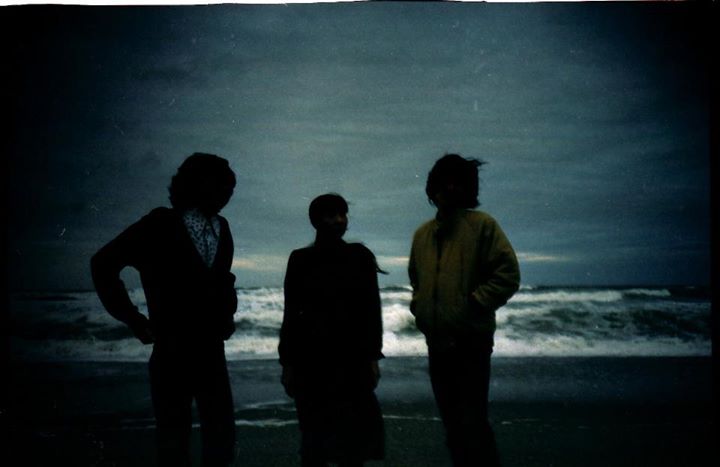
Updating the Concept of “Pure Ubiquitous Pop”
These three youngsters by the names of Someya Taiyo (guitar), Nagai Yusuke (vocals, bass, etc), and Sakakibara Kaori (vocals, accordion, flute) formed Lamp in 2000. They debuted in 2003 with their album Soyokaze Apartment 201 that demonstrated how well they understand city pop, bossa nova, and AOR — all of the “pleasant sounds.”
Not only is their sophomore effort way up there in terms of its degree of perfection, the group have also demonstrated here their will and resolve to “update” pop music as a whole. Above all, they are capable of analyzing themselves very objectively. At the risk of exaggeration, the author of this article feels that this band is an answer to the so-called “sampling era” of the 90s.
This is the pop music of a new era.
— When we interviewed you for your previous release, Soyokaze Apartment 201, you commented that you wanted to create “ubiquitous pop music.” On your last release, the elements of bossa nova, samba, and Brazilian music in general were more apparent in your work. But on this release, it feels like those influences have actually been integrated into the songs.
Someya Taiyo: It’s not that we specifically tried not to show those Brazilian influences… For me at least, it very much feels like it just somehow ended up being the way it is.
Nagai Yusuke: For me, when making our second album, it wasn’t so much a feeling of, “let’s make something that sounds more like ubiquitous pop!” Rather, I just wanted to show the elements we possess in a more natural way.
— Could the fact that those elements came out naturally on this release be partly because you had a better understanding of the recording process this time around?
Nagai: Yes. We have grown not only on the technical side but also mentally as well, which I think has been equally as important. Recording our first album, we were doing so surrounded by all these people we didn’t even know. Because of that, all I could think about was how I couldn’t afford to mess up. Well, that’s not to say I didn’t still mess up over and over again anyway. (laughs) But this time around, having had that experience of releasing our first album and having formed relationships with the people around us, there was less pressure. I think that had an effect on the album, too.
— This might also have to do with that pressure, but wouldn’t you say that your vocals have improved on this new album compared to your debut? I especially feel like those higher register bits of yours have become cleaner.
Nagai: The people around me claim that I’ve had some sort of a “breakthrough.” (laughs) But for me, personally, I’m still not at all satisfied. (laughs) We believe that the vocals in our songs are especially important, so we spent a lot of time doing them. After all, we hope to create works that we can listen to years from now and still feel like we made something decent.
 — One part of Lamp’s appeal are your male-female vocals. Both singers sometimes sing the main melody, and both singers sometimes sing backing vocals. You have strong harmonies. But on this album, many of the songs feature only one of the two singers, singing both the main vocal and the backing vocal all by themselves.
— One part of Lamp’s appeal are your male-female vocals. Both singers sometimes sing the main melody, and both singers sometimes sing backing vocals. You have strong harmonies. But on this album, many of the songs feature only one of the two singers, singing both the main vocal and the backing vocal all by themselves.
Someya: We were aware of that. This time, we were more conscious of the performance itself when doing the chorus vocals. We weren’t so much thinking about how to make the best of our individual talents per se, but rather about how we could perfect the songs. That was always our top priority. It was never like, “okay, so since Nagai sang lead on this song, we’ll have Kaori sing harmony.” Instead, we always just chose the best approach for each song.
— I suppose that was your approach on the instrumental side as well. It’s not like Sakakibara’s accordion and flute can be heard on every song.
Someya: Right. Even though they’re her instruments, it’s not like it was necessary to have accordion on all of the songs. It was always more a question of which instruments would provide the sounds that suit the songs the best. And since we can’t play some instruments like the horns or the strings ourselves, we had quite a lot of guest musicians featured on the album as well. They all understood the songs in their own way and produced the sounds that they came up with themselves — that is, they had freedom to do as they pleased. I have no regrets in terms of the approach we took with that.
— Have you perhaps become a bit freer in your thinking about your own songs?
Nagai: If we put ourselves — the members — first, that would lead to us having to make certain minor sacrifices in our music. We wouldn’t be able to reach what we’re trying to achieve. That’s something we were conscious of when making this album.
Sakakibara Kaori: I think it did a lot of good for the album how we did away with the idea that it should have to be the person in charge of whichever instrument playing every part of said instrument. But then that also led to this person here (Someya) hardly even being featured on it. (laughs)
Nagai: He’s only listed on the personnel credits of like three songs! (laughs)
— So then how will you play these songs live? Will you completely change up the arrangements?
Someya: We hardly even think about our live performances. (laughs)
Nagai: When we were finished making the album, we all just went… “Wait, we won’t be able to play any of this stuff live!” (laughs)
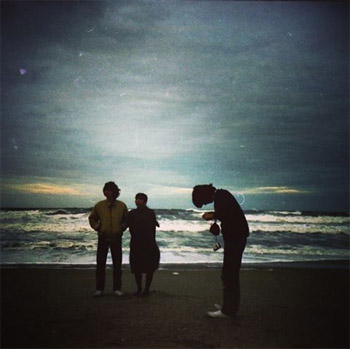 — As we were talking about at the beginning of the interview, Lamp is quite conscious about trying to create “ubiquitous pop.” Nowadays, however, there are many bands and musicians where people focus on their character first and foremost. It’s like even their CD’s are but character goods. I’m not just talking about major-league artists either — I feel like it’s a phenomenon that’s very much present even in more underground circles.
— As we were talking about at the beginning of the interview, Lamp is quite conscious about trying to create “ubiquitous pop.” Nowadays, however, there are many bands and musicians where people focus on their character first and foremost. It’s like even their CD’s are but character goods. I’m not just talking about major-league artists either — I feel like it’s a phenomenon that’s very much present even in more underground circles.
I’m not claiming it’s necessarily bad for artists to do that. But if you take a band like Kirinji for example, one can see how it’s certainly possible for a band to survive just on the merits of their music alone, without them having to rely on some kind of a character. I feel like the listeners, too, have started to realize that there’s a way of listening to music in a pure way like that, too. Just to state the obvious: you’re of course doing very good on that front. In Lamp’s case, it’s obvious that you’re deciding on purpose to bet everything on your music and your music alone.
Someya: Rather than doing so on purpose though, it’s more that I just genuinely think it’s so… lame. That is, trying to gain popularity and sell CD’s through any other means besides your music.
Sakakibara: Even if you tried to gain people’s interest through things other than the music, everyone will eventually lose interest in that thing, and that’ll be the end of that. Ultimately, we make music. That’s what we do. I just want people to listen to our music.
Nagai: There were lots of those singer-songwriter types popping up in the 70s, right? But the only people left standing were those with actual musical talent and the ones with an ambition to go forward. I don’t know if we’ll be able to rely solely on our music, but I do know that you can’t survive unless that’s what you put most of your focus on. So that’s something I want to treasure. But yeah, in Japan it’s basically just Kirinji who can genuinely compete with their music alone. I admire and respect them very much, but I’m not sure we could do the same. (laughs) I feel like we’re not quite up there in Kirinji’s level as far as how they rely only on their music alone.
— I’d say that one major reason behind Kirinji’s acclaim is their ability to write songs that are approachable, but also full of substance. My guess is that what makes an artist “approachable” is the appeal of their melodies.
Someya: Lamp might not actually be that fixated on melodies. For me, it’s like I just try to come up with melodies that fit the chord progression I’m working on, and then I just pick the ones that I like. Although of course it does still make me happy when someone praises my melodies. (laughs)
— On your official website you recommend Leroy Hutson to your listeners. Do you listen to lots of soul music, too?
Someya: Yes. The way that strings are used in soul music is so cool. Also, there’s lots of musicians in that realm who use chords in a way that you just can’t hear in white music. I do believe that that kind of thing is reflected in the songs I write as well.
— Rather than just an instrumentalist, is Someya actually more like the producer of Lamp?
Sakakibara: Yes, definitely. (laughs)
Someya: Most of the time, I don’t come to like any given song because of the playing of any of the featured musicians. Rather, it’s the atmosphere of the music for me. I’m curious to know how exactly the music is composed; which chords are the ones that make the song.
— I feel like you’re kind of fixated on how all the sounds… sound.
Someya: Recently, my favorite sounds are those of mid-70s, pre-AOR music. With Michael Franks for example, while I do like both Art of Tea (’75) and Sleeping Gypsy (’77)… Ultimately I prefer his ’75 sound. (laughs)
— What sort of a position do you think this record will end up taking in your discography?
Someya: Mmm… Well, it’s just our second album. (laughs) I certainly hope it doesn’t end up being our greatest masterpiece. (laughs)
Nagai: With our previous release, it felt like we hadn’t been able to quite convey what it was that we wanted to say with our music. I mean, that’s only to be expected, but… In any case, it felt like with this release that was much less of a problem.
— Finally, is there any one type of person that you hope would listen to this album?
Nagai: Not particularly, no… Maybe the Horigome brothers of Kirinji? (laughs)
The second interview was published on a website called cameco which no longer exists.
Original text & interview: Uchi Takahide
English translation: Henkka
Having personally known the band since before their debut, witnessing the overflowing talent of its members being noticed by so many people and them receiving such critical acclaim — and seeing how the band has developed even further — makes this author feel very hopeful about them indeed.
At any rate, the perfection of the group’s second album, Koibito e, exceeds that of their previous release. Having listened to the rough mix of the album for a good while now, I have become completely captivated by their sound. This being an interview discussing such a masterpiece, my manner of speech may have unintentionally become a little too “eloquent” at times. I ask that you take my personal feelings towards the album into consideration.
I was joined for this interview by the full band: leader Someya Taiyo (guitar), Nagai Yusuke (lead vocals, bass, etc), and Sakakibara Kaori (lead vocals, flute, accordion). Listening to the finalized master of the album together, it was a very congenial discussion indeed…
— Your first release was entitled Soyokaze Apartment 201, whereas this new release is called Koibito e (English title: To Lovers). Such a simple title in comparison, and yet it feels like it carries weight. Is it just me or is it a clear sign of some kind of a change in your mental state since your first release?
Someya: The title Koibito e is very simple, but like you said, it also feels like it carries weight. Simply making it a different kind of title this time, though, it didn’t feel so much like a “change in mental state” or anything.
— I see. The reason I ask is because it felt like, with the added weight of the title, I was guessing if maybe you wanted to convey a more “stripped-down” Lamp. Alternatively, one might also infer from the title that it’s an album full of love songs.
 Someya: I personally like — and often listen to — love songs, so I wanted to try writing some myself. I was listening to love songs while making this album, too.
Someya: I personally like — and often listen to — love songs, so I wanted to try writing some myself. I was listening to love songs while making this album, too.
— Featured on this album for the first time are songs with lyrics written by you, Sakakibara. It used to be a given that when it was a song with you on lead vocals, it would always be written by Someya. So while you had previously been singing lyrics written from his perspective, it must have been an advantage this time to be able to sing your own words from a female perspective, right? By the way, was the music written by Someya before your lyrics?
Sakakibara: The song came with Someya’s temporary lyrics when I first received it from him.
Someya: “Nichiyoubi no Owakare” was the song with my temporary lyrics. It was just to convey the general feeling that I hoped the lyrics would have.
Sakakibara: I sort of changed them and fleshed them out. His lyrics were of course written from a male perspective, so I changed the words to my liking and also changed the story to read more like my own. As for “Ame no Message,” back when we first started playing it live, it only had the lyrics for one verse and chorus. But gradually, its story became more and more complete.
— Creating these worlds in your own words, have you become able to empathize more with the lyrics?
Sakakibara: Yes. It’s not just a matter of switching the word “boku” for “watashi” either. In terms of expression, I do feel like I was able create my own world. And of course I tried my best to make the lyrics listenable even when just listened to objectively.
Someya: I think she made the best of the foundation of my lyrics. They came out good in my opinion.
— By the way, how long did it take you to record this album?
Someya: Last summer when we recorded a song called “Natsu ni Chirashita Chiisana Koi” for a Tower Records compilation, we were already thinking about our second album. That song with its degree of completion gave us confidence. So then starting at the end of August, we spent about four months recording the album.
— Ever since I first heard the album, it gave me the feeling that you had become more accustomed to recording — that you were more relaxed when making this album. Would you say that that’s true?
Everyone: Definitely.
Nagai: Listening to our voices on the first album, you can tell how nervous we were. (laughs) That was the first time we were recording with anyone other than ourselves. But this time around, as we’d built a relationship of mutual trust with the engineer, we were able to properly convey our opinions to him. That was crucial.
— You had a lot of supporting musicians on the album compared to your previous release. That must’ve influenced the sound, right? Did it inspire your arrangements?
Someya: Yes. Speaking about the songs individually, things like Misawa’s electric piano on “Nichiyoubi no Owakare” and Takeshima’s tenor sax playing in “Ame no Message” left an impression for me. They listened to our songs properly, and all parties could understand what it was that we hoped to express. I believe that really took the finished album to new heights.
Nagai: In my mind, Someya had a very clear vision of what he wanted to create during the recordings, and he was able to properly convey it to the supporting musicians. That’s something I personally struggle with — I’m not good at explaining myself to people. As a result, I’ll often just end up playing all the instruments myself. Especially on, for example, “Hirogaru Namida.”
— I suppose that in your case since you’re a multi-instrumentalist, you’re sort of like the Todd Rundgren type — you’d prefer just playing everything yourself rather than try explaining things to people.
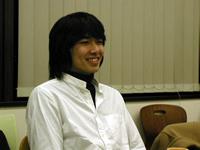 Nagai: Right. I kind of want to play everything myself, too. At any rate, I played many instruments on this album and I had a lot of emotional investment in the songs.
Nagai: Right. I kind of want to play everything myself, too. At any rate, I played many instruments on this album and I had a lot of emotional investment in the songs.
Someya: When it’s Nagai himself playing on his songs, that often brings them closer to our image of what they should sound like. They’re just better that way. With “Hirogaru Namida,” the only thing he didn’t dictate were small details of the drum patterns and such. Even with the violins and the sax solo, he demonstrated on the keyboards exactly how he wanted them to sound.
Nagai: Personally, I want to play everything all by myself to the extent that I can and only ask others for help if I really can’t do it myself. That’s one difference between me and Someya.
— “Hirogaru Namida” emphasizes Nagai’s innocence as it develops the group’s lyrical world even further. It’s such a fully realized song.
Nagai: Unlike the rest of my songs, “Hirogaru Namida” was specifically written for this album. I took great care in writing both the music and lyrics to express my current self as closely as possible. I have an attachment to the song and I’m very pleased with how it turned out.
— The lyrics are almost pure literature in style. Those lyrics, along with the sound motifs of the Beach Boys-inspired era of Prefab Sprout, make for such an interesting combination.
Someya: Yes. I feel like there haven’t been many songs like this released in Japanese pop before. This song is taking Lamp itself in a new direction.
— Another song that feels like it’s taking Lamp in a new direction is “Ame no Message.” The 16-beat rhythm in that tempo makes it sound almost pre-AOR-like in how polished it is. Don’t you think it’s a little too refined and mature for Lamp? (laughs)
Someya: It’s probably the limit of how refined we can make something sound. (laughs)
Nagai: For me, everything about the song — the perfection of the arrangement included — makes me feel like it’s our most accomplished song yet. Don’t you think so? (laughs)
Sakakibara: Yeah. (laughs) I get what you mean. It’s so listenable. Didn’t you like that song from the very beginning? (laughs)
Nagai: It’s such an “un-Lamp-like” song. (laughs) Maybe that’s why I like it?
— The other thing I wanted to focus on in this song is the drumming. I suppose it’s the same person who plays on the rest of the album, too?
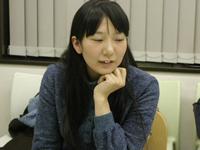 Sakakibara: Yes. Aside from two songs, “Koi wa Tsuki no Kage ni” which features no drumming and “Ai no Kotoba” which features a different drummer, the rest of it was all played by Mr. Sasaki. Once after a concert when you were talking to us, you said: “you’ve got to keep that drummer!” (laughs) It’s the same person!
Sakakibara: Yes. Aside from two songs, “Koi wa Tsuki no Kage ni” which features no drumming and “Ai no Kotoba” which features a different drummer, the rest of it was all played by Mr. Sasaki. Once after a concert when you were talking to us, you said: “you’ve got to keep that drummer!” (laughs) It’s the same person!
— I knew it! I was raving about him and how Jeff Porcaro-like his playing was. Like, “you’ve got to keep him as a sub-member!” (laughs)
Nagai: Right. (laughs) His playing is so easy — it’s like he can play any type of song with no effort. Sasaki has those characteristics where one can immediately tell that it’s him playing. It could be that he understands our songs even better than we do.
— He’s really quick to get songs, isn’t he? I’m telling you, drummers who are capable of playing songs like this — especially in the genre of vocal pop music — are masters. Going forward, I believe he’s going to be an integral part of the Lamp sound.
Sakakibara: He’s young, too. Being so close in age to us, we share a similar sense for things. He’s great fun to talk to.
— Another instrument that plays an important part in this song is the tenor sax. By the way, the backing horn arrangement was done by bonjour’s Mr. Misawa, wasn’t it? What was the inspiration?
Someya: I asked him to make it sound like Jobim’s “Wave.”
— Ah, so Claus Ogerman. I see. I didn’t realize until you said it, but perhaps there is indeed a similarity between the two in how there is only a small number of notes used to create gorgeous, memorable musical phrases.
Nagai: I like it, too. It’s the horn arrangement that makes it so polished and un-Lamp-like.
— Someya’s “Nichiyoubi no Owakare” features key change upon key change. That must’ve been a difficult song to make, all the way from writing to recording. Did you simply write it in order from beginning to end?
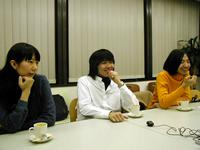 Someya: Yes, from part A, to part B, to part C — all in order. I put quite a lot of thought into how I could make it a smooth transition from C back to A. But then that’s always the case.
Someya: Yes, from part A, to part B, to part C — all in order. I put quite a lot of thought into how I could make it a smooth transition from C back to A. But then that’s always the case.
Nagai: Right. That’s a constant theme for us — “how do we make the transitions as smooth as possible?” (laughs)
— It’s what gives the song such a natural flow.
Someya: I was writing songs like “Ame no Message” and “Saishuu Ressha wa 25ji” around the same time, so it’s not like I was paying special attention to this song. If anything, I think “Nichiyoubi no Owakare” might be a little too simple… I did have a feeling that you might like it when it gets to the bridge though. (laughs)
— Huh?! (laughs) You’re right! That’s the best part! Wait, but it’s not like you specifically wrote the song with me in mind though, right?! (laughs) Hahaha. Now I’m just being gross. (laughs)
Nagai: …No, the song was not written with you in mind. (laughs)
Everyone: (bursts out laughing)
Someya: I just remembered how you once praised the key change in “Machi wa Amefuri” and so I figured you might like this one, too. (laughs) My parents told me that they think this song is the easiest one to get bored of though. (laughs)
— No way. (laughs) Maybe they were talking about its theme or such… The progression itself is definitely not easy to get bored of. This might be a cliche, but put simply, it has that 70s kayou kyoku feel to it… Like, it has those elements that make a song universally popular. It’s just a good song in its natural simplicity.
Meanwhile, Nagai’s song “Ashita ni Nareba Boku wa” — like the song “Konya no Futari” on your previous album — has a remembrance of SUGAR BABE to it. It picks up where you left off while also introducing something new.
Someya: The bridge of this song is so great. The accordion and all…
Nagai: You don’t usually hear accordion playing like this on top of a shuffle beat, right? I just had to force Sakakibara to get it so she could play it like that. (laughs) I do think it gave the song a good ambience as a result.
— Right. Get careless and it ends up sounding like Yokomori Ryuzou (greatest accordion player of the post-war era, known for playing all backing parts in his music using the accordion alone; truly an amazing individual). (laughs) The electric guitar riff is nice, too. It somehow reminds me of Muramatsu Kunio, with the tone on the distortion and all. On the other hand, this song would probably work even if played solo on an acoustic.
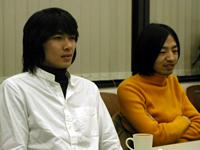 Nagai: I’m not talented enough to do that. (laughs) But yeah, it would work on an acoustic, too. It’s kind of folky.
Nagai: I’m not talented enough to do that. (laughs) But yeah, it would work on an acoustic, too. It’s kind of folky.
Someya: You wrote this on the guitar, right?
— Ah, right. Nagai writes some of his songs on the guitar and others on the piano. I’m guessing “Hirogaru Namida” might’ve been the only one written on the piano?
Nagai: That’s right. I wrote this song on the guitar, and “Hirogaru Namida” alone on the piano.
— Another notable thing about this song are the double vocals. Those were multi-tracked, right?
Nagai: Yes. It’s two vocal takes on top of one another. It sounded good that way in the demo stage, so I wanted to keep that atmosphere in the finished version as well. I wrote this song three years ago and played it with my previous band, but since Someya liked it so much we adopted it for Lamp.
— You’ve told us lots of very interesting things regarding the recording of this album. Next, I’d like to ask you a rather “deep” question: what do you hope for your listeners to feel when they listen to Koibito e?
Someya: I just want them to pay attention when they listen to the songs. Compared to our previous album, we put a lot of thought into “variety” when writing the songs here. There were lots of bossa nova rhythms on our previous release, but I didn’t particularly care for us being talked about purely in terms of that whole scene… After all, it’s merely but one element of Lamp. I hope that with the sound of this release, people will be able to understand Lamp on a deeper level. Also, as we’ve now gotten more used to the recording environment, we were able to properly express in the songs the image that we had of them. Of course, I hope that listeners who liked our previous release will be happy with this one, too.
Nagai: One big thing is that I feel like we were able to naturally convey the “Lamp sound” that we already possessed. Also, compared to our previous release, I was personally more able to create the kind of sounds I wanted to create. Songwriting-wise, I had previously been too preoccupied with thinking about “Lamp.” Like, I spent too much time thinking about whether or not something I wrote sounded like Lamp. But recently, I’m finally able to take the ideas of my songs and make them take shape in sound. I was able to imprint my own color on the album, yes, but when you listen to it, it just has that cohesive Lamp sound to it all the way through.
Sakakibara: Our previous release was more inclined towards bossa nova so we hoped to have people who were into that sort of thing listen to that album. I think those people will also find this album easy to listen to, but I also think that people who haven’t listened to this kind of pop before will find it to be an easy listen as well. We were able to have so many different colors on the album and yet it sounds like such a cohesive work. That makes it a success, I think. It’s really thanks to us having gotten used to the recording environment that we were able to naturally showcase the good sides of our music. And in terms of the songwriting, on this release I myself was able to take part in writing some lyrics. It made me happy how it really felt like it was all three of us creating something together.
— Finally, please tell us about your future plans.
Someya: There’s nothing concrete yet, but we are planning an in-store show at Tower Records.
Nagai: We made a promotional video for “Koibito e” ~ “Hirogaru Namida.” It’s going to be shown at the Tower Records store in Shinjuku, so definitely do go see it. We’re quite pleased with how it turned out. By the way, Someya’s mother cried when she saw him in the video. (laughs)
— I really want to see that. An image video, huh…? And that’s such a great story about Someya’s mother crying over it. (laughs)
Someya: No no… (laughs) The reason she cried had nothing to do with how well-made the video was or whatever. She was just crying because she felt so moved. Like, “Ahh… My son who was so tiny back then… Now he’s walking the streets of Ochanomizu… You’ve gotten so big!” (laughs)
Everyone: (bursts out laughing)
— Having just released their fantastic new album, Koibito e, that is all from the strikingly joyful members of Lamp. (laughs) Thank you very much.
Liner Notes
Here are the liner notes for all songs on Koibito e. They were written by Mr. Someya, the first half in 2005 and the second half in 2007.
Original text: Someya Taiyo (parts one, two, three, four, five, six, seven & eight)
English translation: Henkka
1. “Koibito e” (music & lyrics: Nagai)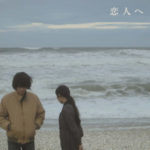
By the time we had nearly finished recording our second album, Nagai told me he had one more short song he wanted to do with an acoustic guitar. I wasn’t terribly into it myself initially, but we discovered that having this song kick off the album really gave it a sense of unity, and so we ended up including it.
It’s a simple song just over a minute long, with Nagai playing finger-picked acoustic guitar and later acoustic piano as the backing halfway through. It’s a very beautiful, sad song. The imagery of sea that we set to this song was really beautiful as well, and whenever I listen to this song I’m always reminded of that footage.
The title of this song was taken from the album title which we had already decided on by that point.
2. “Hirogaru Namida” (music & lyrics: Nagai)
“Kimi wo omou” (“I think of you“). The song begins with the protagonist’s thoughts of someone.
Of the three Nagai-penned songs on the album, “Ashita ni Nareba Boku wa” and “Ai no Kotoba” were written quite a bit earlier. In that sense, I always felt like this song was the one that really best represented him in that era.
I still remember the day when he first let me hear this song along with the then-still-unfinished “Omokage” and “Tsumetai Yoru no Hikari.” My first time hearing his songs like “Hirogaru Namida” and “Tsumetai Yoru no Hikari,” I really sensed in a real way how Nagai had suddenly grown by leaps and bounds as a composer. At the time, I remember thinking to myself: “if my bandmate keeps writing songs as good as these, my position in the group will be in danger.” Even when looking back on the history of Japanese rock and pop music, I don’t think there have been many composers who could write songs of this quality; songs that are this stylish. Seeing him like that made me happy, but also a little bit scared.
When we were working on the second album, there was something I kept thinking about. Should we put both “Hirogaru Namida” and “Tsumetai Yoru no Hikari” on the album, or only just one of the two? Both of them were of such exceptional quality, but they were also a little bit difficult to understand. My fear was that if we included both, it would make the album as a whole too difficult. So, I suggested to Nagai that we only put “Hirogaru Namida” on the album, and he agreed.
When we were recording the song, I wanted to respect the way Nagai heard it in his mind. As such, I made it a point to not try and influence the arrangement at all. Unlike all the previous times, I did not offer my own ideas to him at all. Apparently, Nagai was (perhaps due to some insecurity?) not happy with this. But in my mind, Koibito e felt like an album that existed solely for the sake of this song. It was such a pleasure to see this song take shape as we were recording it.
Reading the credits, most of the instruments on this song were played by Nagai himself. On the second album, the only songs that Nagai arranged were this one and “Ashita ni Nareba Boku wa,” but even so, there was so much work he needed to put into his performances, arrangements, and vocals, it was apparently quite a source of stress for him.
But for all his trouble, he completed a song that I believe people will keep listening to forever.
3. “Saishuu Ressha wa 25ji” (music & lyrics: Someya)
The longer the time you spend working on songs, the more you will amass all kinds of different ideas for them. But while in most cases you wouldn’t assemble all those ideas into a single song, with this one I really wanted to do just that — force all those ideas onto one “map.” I pretty much forcibly sewed all those ideas together to create a complete song.
During this period (the making of Koibito e) the only lyrics I wrote were for this song, and I feel like everything about the atmosphere I wanted to express at the time is condensed into this one song. Some of you may have realized this, but the lyrics of the song are in the mood of the words printed on the obi strip of Soyokaze Apartment 201, only expanded into a full song.
In terms of its recording, perhaps it was just due to my own inability to properly arrange such a complex song, but all its parts individually sound kind of incomplete. That’s something I don’t like about it. But depending on how you listen to it, at least it has that sound; that simple drive to it, and the mix does sound good to my ears. Perhaps the merits of this song came directly from me simply forcing it to completion.
Two young lovers miss their last train. This is a song about them, loitering about the city together, and those nighttime sceneries.
4. “Nichiyoubi no Owakare” (music: Someya, lyrics: Sakakibara)
It was my wish for our second album to have Kaori sing some pop music that was “easier” than our prior songs, and so I wrote her this song along with “Ame no Message.” The lyrics are credited to her, but I was there with her brainstorming ideas for both songs. I feel like the lyrics to this song have such a great atmosphere about them.
Composition-wise, I like how there’s almost an annoying amount of key changes. The horn arrangement was done by Mr. Misawa of bonjour. Later on, we added some more sounds to it just to make it sound fuller, but I’m extremely pleased with the arrangement itself. Also, I’m very fond of the electric piano phrases that pop up every now and then, as well as the solo in the outro. Lastly, I think Kaori’s overdubbed vocals in the background chorus bits took the song in a good direction.
5. “Ashita ni Nareba Boku wa” (music & lyrics: Nagai)
While this song is included on our second album, Koibito e, it’s actually a rather old song. Nagai had already written it two years prior to us working on our first album, Soyokaze Apartment 201.
Listening to Nagai’s demo of this song, it made me and Kaori both so happy. Already at that point, I recognized how talented of a songwriter Nagai was and I felt like the song really fit us well. While this may be obvious, at the time we hadn’t yet discovered what we were all about as a group. We were just trying to fumble our way through it. It was like, “well, seeing as Nagai wrote a song like this, then maybe I’ll in turn write a song like this.” Not that we ever specifically said that to each other, but that’s what it felt like.
Unfortunately, at the time, Nagai had no intention of doing this song with Lamp. For some reason, he instead recorded it with his old band and included it on a four-song demo that they sent out to a demo tape audition where it got a good reception.
This is something that I can only say now, but when me and Kaori first heard that demo of “Ashita ni Nareba Boku wa,” we both felt like it was the song that best expressed what Lamp was all about. We felt sure that we understood it better than anyone, and in all honesty, as a fellow member of our group I questioned Nagai’s motives and actions at the time. I’m sure Nagai has his thoughts regarding the matter, but in any case, I’m just expressing how I personally felt at the time.
However, some months and years later — with Nagai’s consent — we were finally able to include the song on Lamp’s second album. I hoped to show all of Nagai’s strengths on the recording, so we did it with Nagai himself playing most of the instruments that he could play. On this song, something that left a deep impression on me were Kaori’s accordion arrangement as well as Nagai’s string arrangement.
6. “Ame no Message” (music: Someya, lyrics: Sakakibara)
When I first played Nagai and Kaori my demo of this song, I was more nervous than usual as to how they would react. The reason for that had to do with the fact that I had written the song with the eagerness of getting Kaori to sing a song that was rather a “pure” type of pop… I actually felt like I may have overdone it with this song. However, while the two of them could see why I felt that way, they still thought it was a good song and so we went to record it as-is.
I’m very pleased with the chord progression in the verses and the latter half of the bridge. Even listening to it now, I feel like I did a good job with it. Kaori’s flute sounds very pleasant as well, giving the song a nice atmosphere. Furthermore, Nagai came up with the ideas as to the chorus harmony bits throughout the song.
I wrote the base for the lyrics after which Kaori changed them more to her liking. In the end, I feel like we were able to make something that really captures that aura of hers.
7. “Ai no Kotoba” (music & lyrics: Nagai)
This song was written by Nagai. Like “Ashita ni Nareba Boku wa,” it’s a rather old song.
Beginning with our second album, it became customary for me and Nagai that whoever wrote the song would also be the one to arrange it. However, because Nagai usually doesn’t wish to include his old songs on our albums, I had to bargain with him to include this song on the album by agreeing to do the arrangement for it myself.
Prior to Koibito e, this song was released on a compilation album called Tokyo Bossa Nova, featuring a bossa nova-ish take of the song. We felt like both the bossa nova version as well as the 16-beat rhythm version both had their strengths, so we decided to release them both.
The bossa nova-ish “Ai no Kotoba” was arranged by Nagai and Kaori, and I liked their version so much that when it was time to make my version of the song for Koibito e, I pretty much put half of their ideas into my arrangement. I especially like Kaori’s great chorus vocals beginning with the second bridge. Nagai’s honest, beautiful melody in the final verse was the foundation of the song, and I feel like changing up the harmony in the arrangement really worked.
8. “Koi wa Tsuki no Kage ni” (music & lyrics: Someya)
I feel that this is a very beautiful song. It’s a very complete song, and even if I do say so myself, I see it as a miracle that I was able to write a song like this.
I say “miracle” because it happened in part by accident. At the time, I wrote the song with a desire to something unlike anything else I’d written before it. I didn’t know it was possible for me to write a song of this quality. Even now, I’m very satisfied about having written it.
It may have been because of my excitement about the beauty of the song that when it came to actually recording it, I didn’t have a clear idea about just how we should go about doing so. Ultimately, the three of us recorded the vocals and the guitar simultaneously as if it were a live performance, and then we just added some violins and tenor sax and the song was complete.
Not only am I happy about the song, but I also like the lyrics that I wrote for it. It’s a song that we often play live even now.
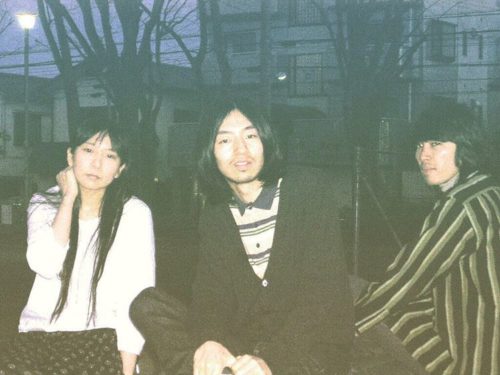
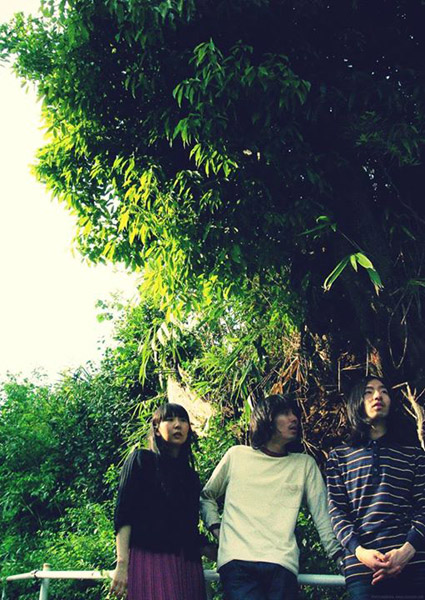
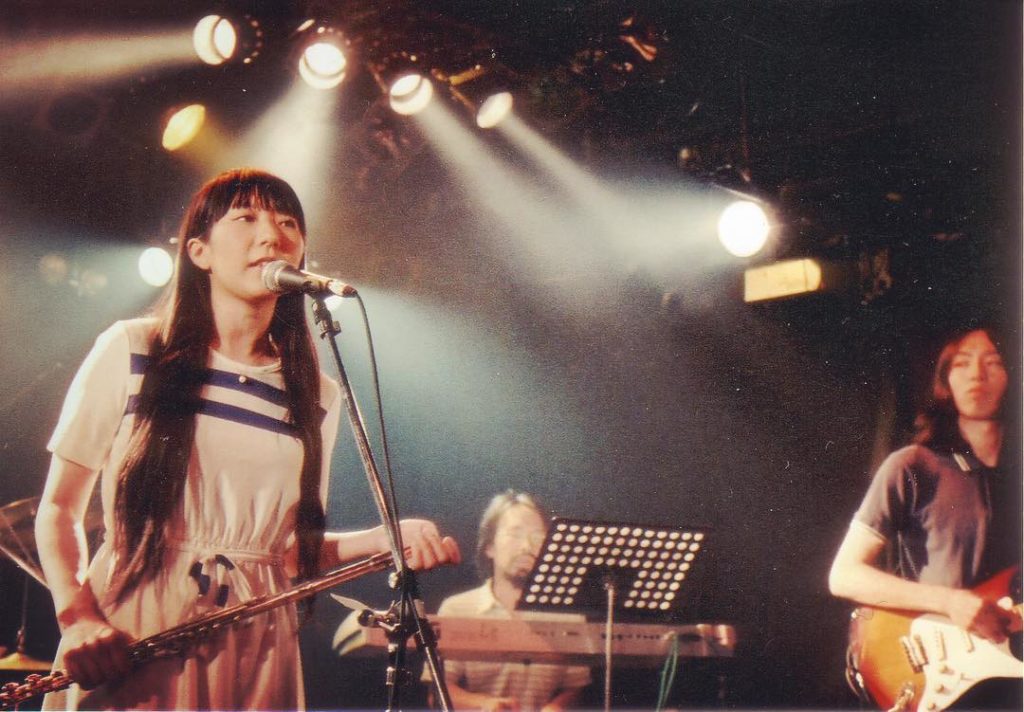
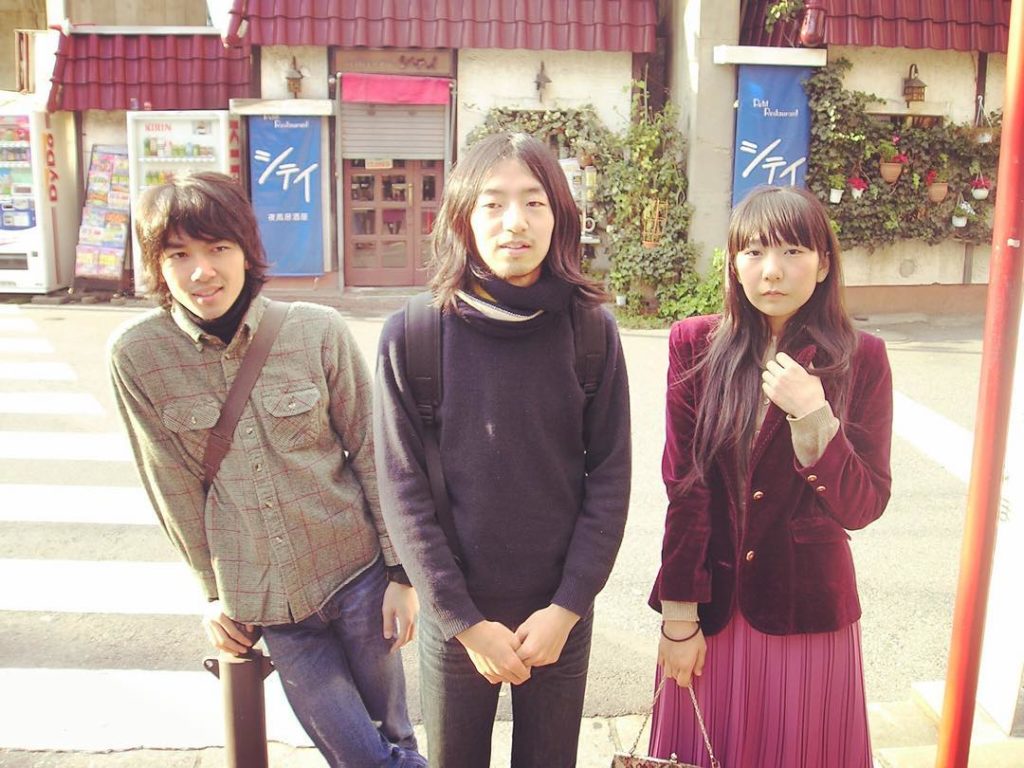
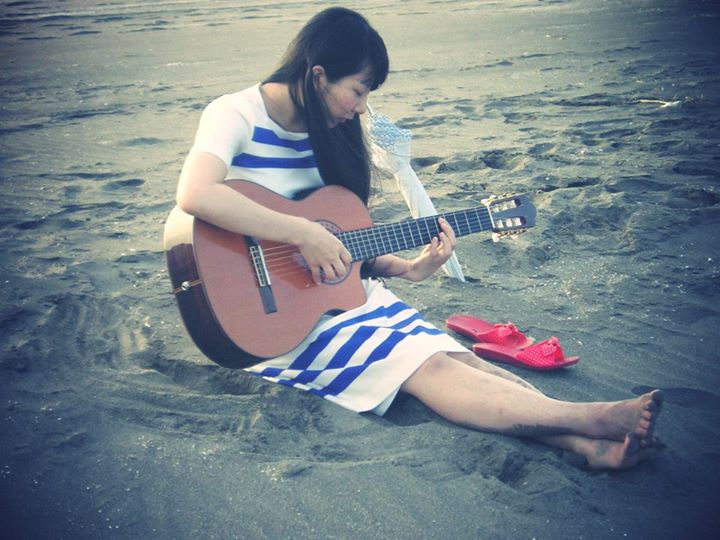

This album holds a special place in my heart because Hirogaru Namida was the first Lamp song I heard and the reason I got into Lamp in the first place. I think it’s still, to this day, my favorite Lamp song.
Mr. Someya was right in saying it’s a song people will keep listening to forever. But all of the songs on Koibito e are wonderful and I love getting to hear the members’ thoughts. Thank you Henkka for translating!
Hey anon. Fantastic album for sure, was just listening to it over the weekend. And no doubt, “Hirogaru Namida” is one of those Lamp classics.
Thanks for reading.
Sorry for the late reply again, but thank you for translating! It is indeed a great album. I hope I can comment on your other translations when I have the time.
Amazing interview. I appreciate the translations you do! By any chance, do you happen to know the old band Nagai used to be in?
Hey, thanks for reading! I don’t remember seeing the name of Nagai’s band mentioned anywhere, and I’m reasonably sure they never put out any actual releases. Sorry I can’t be of more help.
No worries!!
Thank you so much for this complete and well thought out translation.
Cheers!
Where is the original link?
For the “OOPS!” interview? Sorry, it is no longer available online. (Not even on Wayback Machine, I don’t think.)